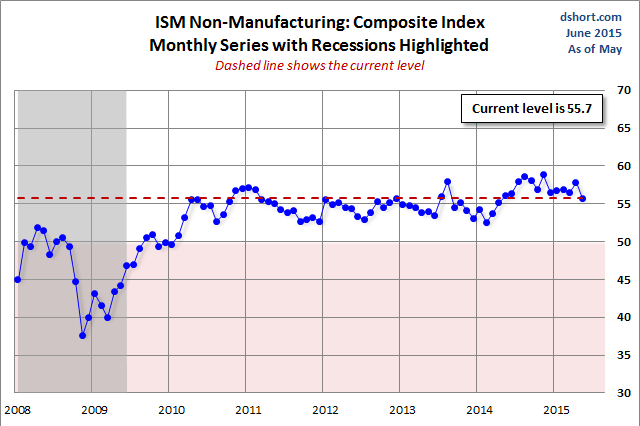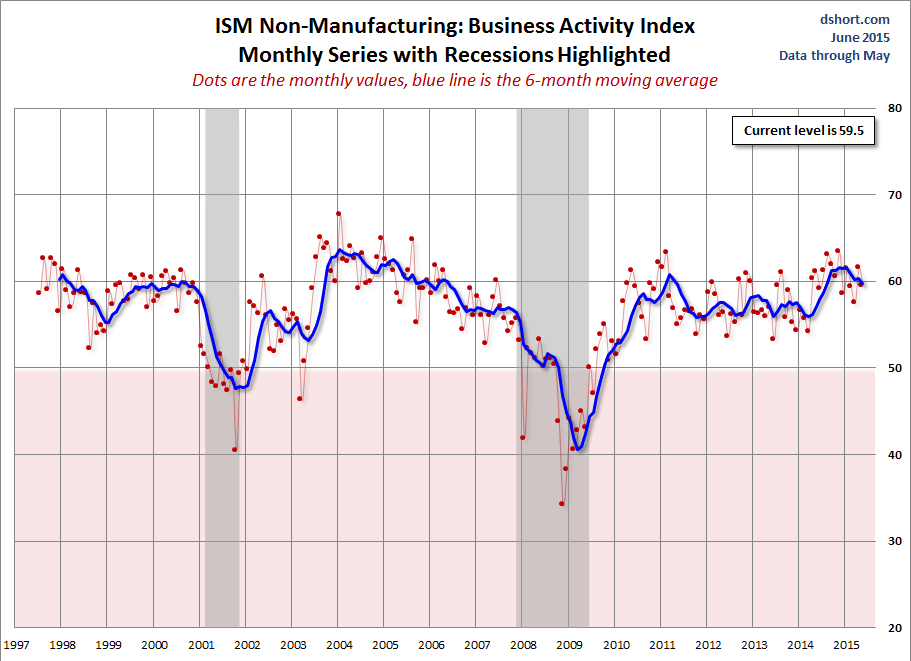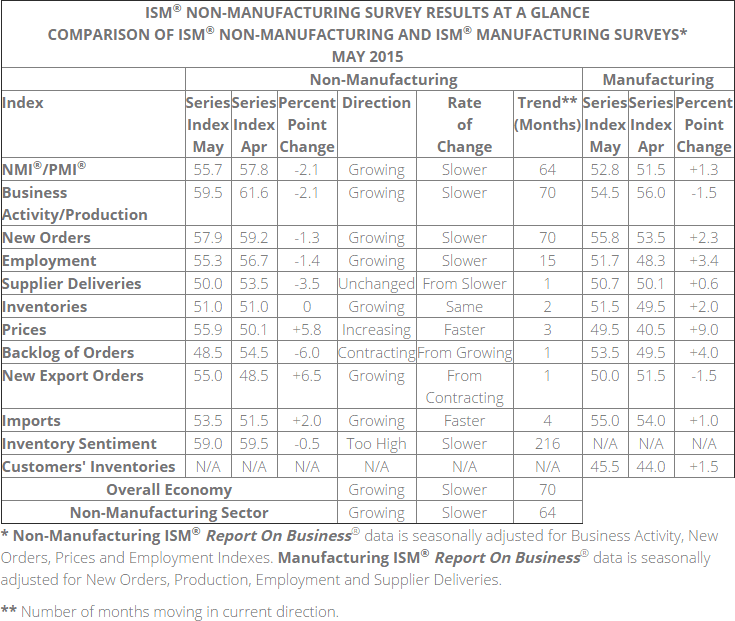Today the Institute for Supply Management published its latest Non-Manufacturing Report. The headline NMI Composite Index is at 55.7 percent, down 2.1 percent from last month's 57.8 percent. Today's number came in below the Investing.com forecast of 57.0 percent.
Here is the report summary:
"The NMI® registered 55.7 percent in May, 2.1 percentage points lower than the April reading of 57.8 percent. This represents continued growth in the non-manufacturing sector although at a slower rate. The Non-Manufacturing Business Activity Index decreased to 59.5 percent, which is 2.1 percentage points lower than the April reading of 61.6 percent, reflecting growth for the 70th consecutive month at a slower rate. The New Orders Index registered 57.9 percent, 1.3 percentage points lower than the reading of 59.2 percent registered in April. The Employment Index decreased 1.4 percentage points to 55.3 percent from the April reading of 56.7 percent and indicates growth for the 15th consecutive month. The Prices Index increased 5.8 percentage points from the April reading of 50.1 percent to 55.9 percent, indicating prices increased in May for the third consecutive month. According to the NMI®, 15 non-manufacturing industries reported growth in May. Overall there has been a slight slowing in the rate of growth for the non-manufacturing sector. Respondents’ comments are mostly positive about business conditions and indicate economic growth will continue."
Unlike its much older kin, the ISM Manufacturing Series, there is relatively little history for ISM's Non-Manufacturing data, especially for the headline Composite Index, which dates from 2008. The chart below shows Non-Manufacturing Composite. We have only a single recession to gauge is behavior as a business cycle indicator.

The more interesting and useful subcomponent is the Non-Manufacturing Business Activity Index. The latest data point at 61.6 percent is up from 57.5 the previous month.

For a diffusion index, this can be an extremely volatile indicator, hence the addition of a six-month moving average to help us visualizing the short-term trends.
Theoretically, this indicator should become more useful as the timeframe of its coverage expands. Manufacturing may be a more sensitive barometer than Non-Manufacturing activity, but we are increasingly a services-oriented economy, which explains our intention to keep this series on the radar.
Here is a table showing trend in the underlying components.

Here is a link to our coverage of the latest ISM Manufacturing report.
Note: We use the FRED USRECP series (Peak through the Period preceding the Trough) to highlight the recessions in the charts above. For example, the NBER dates the last cycle peak as December 2007, the trough as June 2009 and the duration as 18 months. The USRECP series thus flags December 2007 as the start of the recession and May 2009 as the last month of the recession, giving us the 18-month duration. The dot for the last recession in the charts above are thus for November 2007. The "Peak through the Period preceding the Trough" series is the one FRED uses in its monthly charts, as illustrated here.
